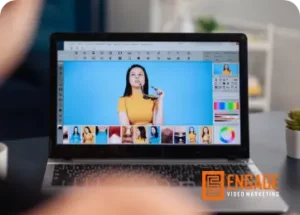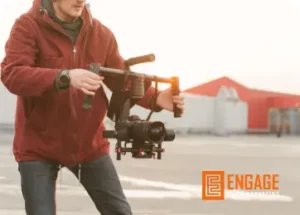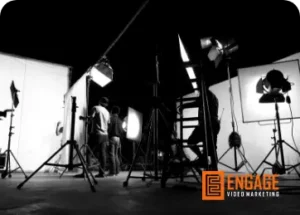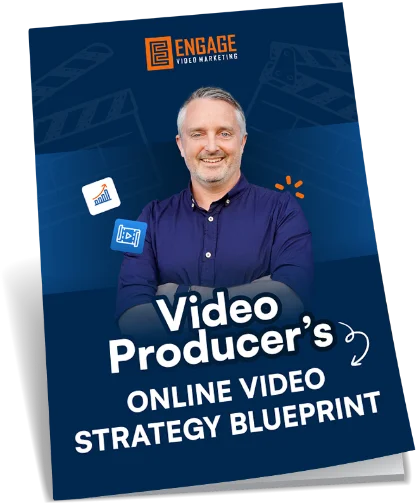The world for sales teams is shifting and more and more relationship building prospect, nurturing, objection handling and sales enablement needs to be done online. This is where video is really starting to shine. In this article, I’m going to share how to use video in virtual sales to continue to smash your quotas and your business.
Let’s face it, whether it’s B2B or B2C sales teams, don’t have it easy. The stats aren’t on your side either, with studies showing that most people don’t want to even talk to a salesperson until they are ready to buy. Buyer behavior isn’t on your side either, with an increasing shift to online sales and e-commerce continuing full steam ahead and technology. Although it seems like a blessing, in some ways it can be seen as a threat to the role of a salesperson in building relationships and nurturing prospects. Not to mention the difficulties that exist in getting face to face with your customers in a post pandemic world.
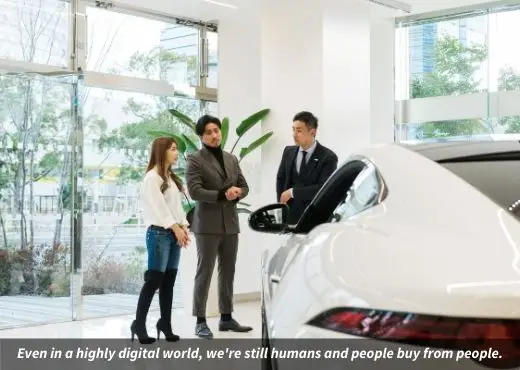
So how can you navigate this changing digital environment and continue to focus on the key thing you are good at – nurturing relationships and making sales. The answer is VIDEO! and very soon I’m going to be sharing with you 5 super powerful strategies that you can begin to use today to dominate in virtual and remote selling. But before we do, let’s talk about why video is so powerful in remote and online selling.
You see, it really comes down to an understanding of the underlying shift that we’ve been seeing in our society over the last 20 years or so, as we’ve been steadily moving from a high touch, low tech world pre-internet, through to now where many cases where in a high tech, low touch world. Let me explain, in an analogue world, business was done more or less face to face, right? High touch, low tech. If we wanted to buy something, we’d go into a store. We would speak to the shopkeeper or a salesperson and then make a decision to buy. But over the years as business has gone increasingly digital, we’re now more likely to jump online and do our research, work out all the options, visit comparison sites and read reviews. Only when we are ready to buy, we’ll either head into a store or go to a website to make an inquiry or purchase. Low touch, high tech.
Despite this, the reality is that even in a highly digital world we’re still humans and people buy from people. To really cut through and be effective in sales, we need to bring the high touch back to our high tech world. With high quality video tools now simple to use and kind of everywhere, it’s easier than ever to bring that human connection back into your sales toolkit. Let’s break down my 5 strategies that you can adopt to be a more effective virtual salesperson.
1 – One to one video messaging

One to one video messaging, or one to one asynchronous video messaging is all about making communication, more personal and human. We get hundreds of emails, text messages, or messenger pings every day. It’s easy to ignore them or skim, read, or move to the trash. But when we take the few minutes required to film a super simple direct video message, instead of just bashing it out in an email, we can quickly reach a prospect or customer in a way that’s very hard to ignore. It allows for some personality, humanity, and connection, filmed directly on your webcam or your smartphone, and then sent along with a couple of lines of text in an email or messenger platform. The fact is that sending one to one video messages can actually take less time than carefully crafting the perfect email. And in my experience, it’s way more impactful.
2 – The personalised video cold call
Granted some sales people love cold calling, the fact is that, many don’t – like me. It’s increasingly difficult to even get through to people on the phone as more and more people turn to other preferred methods of communication. This is where the personalised video cold call comes into play. After doing your research on a prospect and finding the contact details or LinkedIn profile of your ideal contact, then it’s a simple as reaching out with a personal video, adding value or sharing some insight, and then asking for the next step. Click ‘Send’, track when the video is viewed, and follow up as needed. The important thing to remember with this approach is that your cold outreach video must provide some value for the prospect. It can’t simply be a cold pitch and all about you or your business. By taking the time to research the prospect, identify their pain points that you can assist with and crafting a message that adds real value to their lives or helps them out with something, only then do I believe that you have the right to ask them to take the next step. By using video outreach in this way, you’ll be cutting through the noise and very quickly your prospects will decide if they want to work with you or not. Either way, you are much more likely to get a reply.
3 – Pre-recorded objection busters and FAQs
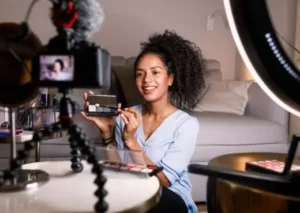
As a salesperson, you know the most common objections, questions, and clarifications that a prospect requires, which helps move them towards a close. You probably find yourself busting these objections or responding to those same questions again and again and again. By taking some time to record your thoughtful replies to these common objections on video, you’ll be able to deliver the right answer when it’s needed every time. My suggestion is to not over produce these. Keep them super simple to the point and inject some of your personality. Once you have this knowledge bank of objection busting answers to frequently asked questions ready to go, you’ll be able to quickly send a prospect a video response whenever it’s required. A key tip here is to ensure that the way you deliver the message in the video feels like it’s being done specifically for the recipient. Even though you can use it again and again with different people, just make sure you use first person language such as you.
4 – The ‘What to Expect’ video
This one is seriously underutilised but can make such a difference, particularly when a sale is right on the line, this video can tick them over the edge. What to Expect video is a short video designed to sit right next to the call to action button or form on a website, whatever action you need a prospect to take such as book a call, or schedule a meeting, or add to cart, or fill out your details below. Whatever the action, by putting a short video right in the place, that action will happen, you can quickly influence their decision to actually take that action. The thing is that, online people are often reluctant to take action even when they’re interested in something, because they’re held back by uncertainties over what will happen next. If I enter my details in here, will they spam my inbox? If I book a meeting time, how will the meeting take place? And what do I need to do beforehand? Or what will we talk about? If I add this item to my cart, how does it get shipped to me or assembled? Or what if it’s the wrong thing? Can I return it? All of these questions are going through people’s heads. By creating a short direct video, that makes it super clear to a prospect what will happen next, once they take the desired action, you can have a dramatic increase in the likelihood that the prospect will actually take that action – simple.
5 – Proposal or pricing walkthroughs
This is one of my all-time favourite ways to inject video into your sales process, one that I use multiple times every week in our video strategy agency. Using a video and screen recording tool to record a short personal video of yourself, talking a prospective client through a proposal document, quote, or pricing guide, you add so much more context and human connection to the numbers. When a prospect gets a walkthrough video in the email, along with your PDF quote or price guide, they’ll be forced to focus more on the emotional choice they’re making about who to help them rather than the purely rational choice about how much something costs. A video walkthrough of a proposal also serves another critical role, which can’t be overlooked. In many cases during the sales process, you may have had contact with just one or a small few key players within the decision making process, but by sending a video walkthrough, you’re also equipping these people with an important tool that they can use to convince other stakeholders that your product or service is the best fit for them without actually meeting the other stakeholders or decision makers at all.
The best thing is that none of these 5 strategies require high quality professional production and can simply be achieved with your smartphone, or your webcam, or using simple free video and screen recording tools such as my favourite from Vidyard. There really is nothing holding you back from giving one or all of these strategies a try.
